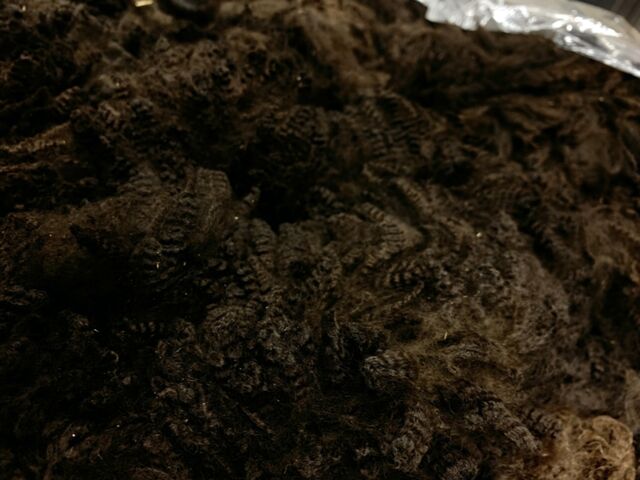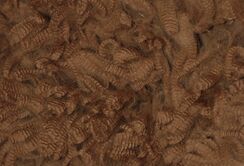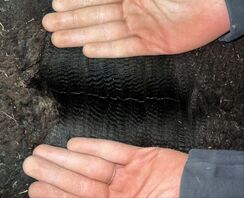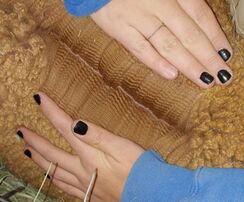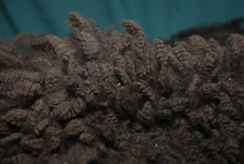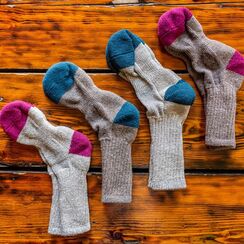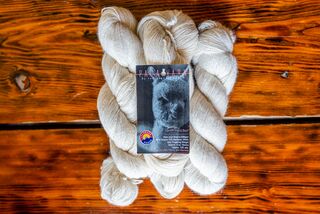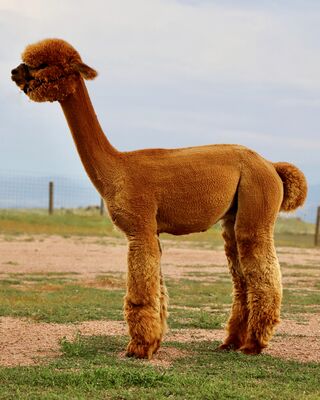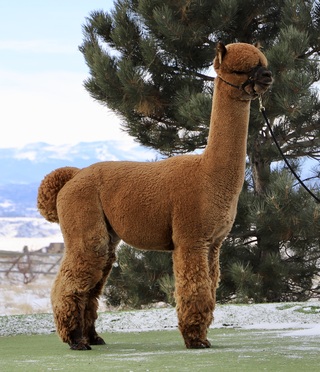Alpaca Fiber
The first fleece or baby fleece of an alpaca is the finest, or is expected to be the finest and softest fleece that the animal will produce and is also the most highly prized and expensive at this time. Alpacas lack the natural body oils produced by most animals such as sheep, therefor alpaca fleeces do not irritate the skin at any point in time.
Alpaca fiber feels about five microns softer than sheep's wool of the same micron count. In textile terminology, the term "soft" refers to "handle." Handle consists of four separate attributes: skin comfort (no itching), stiffness, smoothness, and softness.
What separates good alpaca fiber from other natural fibers? It's the beautiful soft handle and luster that is carries. The handle can often confuse one into thinking they are handling fiber of a lower micron, add this to the range of over 22 natural colors, and it is understandable why so many spinners/weavers cannot get enough of this unique fiber.
Fiber: Pricing
The demand has recently soared in the last few years and this, in turn, has led to vastly increased prices for alpaca fiber. Something to note is that there are now people buying the whole package of fleece and not just the blanket of the alpacas.
Well skirted alpacas fleeces have averaged a sales price of $1-$28 per pound of fleece, and raw fleeces (un-skirted fleeces) have averaged a sales price of $0-$10 per pound, and this data from from 2018. It was also found that Rovings & Batts from alpaca fiber averaged $50-$75 per pound, and alpaca Yarn averaged $100-$150 per pound. Impressive.
Fiber: Unique Features of Alpaca Fiber
The overall potential for the apparel industry with alpaca fiber is enormous for manufactures, spinners and weavers. A fiber that is fine, but very soft with no prickle with excellent thermal qualities will surely endear itself to the discerning public and ensure a successful future for the industry. Scarves, hats, gloves and fashion garments are just some of the clothing that can be found available around the United States today.
There are two types of alpacas: Huacaya, who produce a dense, soft, crimpy-sheep like fleece & Suri's who produce silky-pencil-like locks, resembling dreadlocks but without the matted fibers.
Why is alpaca fiber so valuable?
- Alpaca fiber is generally fine with little to no guard hair, meaning that it has less prickle factor than most other fleeced animals.
- It is compatible with other woolen or worsted manufacturing systems
- has a rich silky sheen which has a high visual appeal
- 20% warmer than the same weight of Merino wool
- 4X more abrasion resistente than Merino wool
- Stronger than wool and does not pill in the better quality animals
- Can be spun, woven, knitted and felted
- contains no grease, oil or lanolin and does not have a smell (other than the natural alpaca smell)
- Comes in 22 different colors and many shades
- Lightweight & incredibly soft
- Doesn't shrink when washed
- Doesn't retain water and can resist solar radiation
- Has excellent thermal and water resistant qualities
- Can easily be dyed any color without losing the sheen
- Is bulky, and will spring back when squished
- Alpaca fiber is 3X the tensile strength of wool
A solid white fleece is more commercially desirable color as it can be dyed to a broader range of colors. It is also often a denser and finer fiber than any colored fleece.
What are the qualities of a 'great fleece'?
- Fineness - a lower micron fleece means better handle or softness
- Density of the fleece - a dense fleece produces more shear weight and therefor offers a better financial return
- Consistency/Uniformity of the fleece - know as the 'standard deviation (SD)'
- Lack of guard hair - this can reduce the value of a fleece
- Silky Brightness - an indicator of softness in handling
- Shearing Weight - this can be improved by staple growth, density and consistency
Here at Red Granite Ranch we aim to consistently produce a fleece with a sheer weight of about 9-12lbs and a micron count below 20 at the age of 3. We retain a lot of our fleeces every year when we shear, usually our show strings fleeces, top herdsires fleeces, and fleeces that are under 23 microns for products and to sell raw to a discerning buyers.
Wednesday, March 13, 2024

